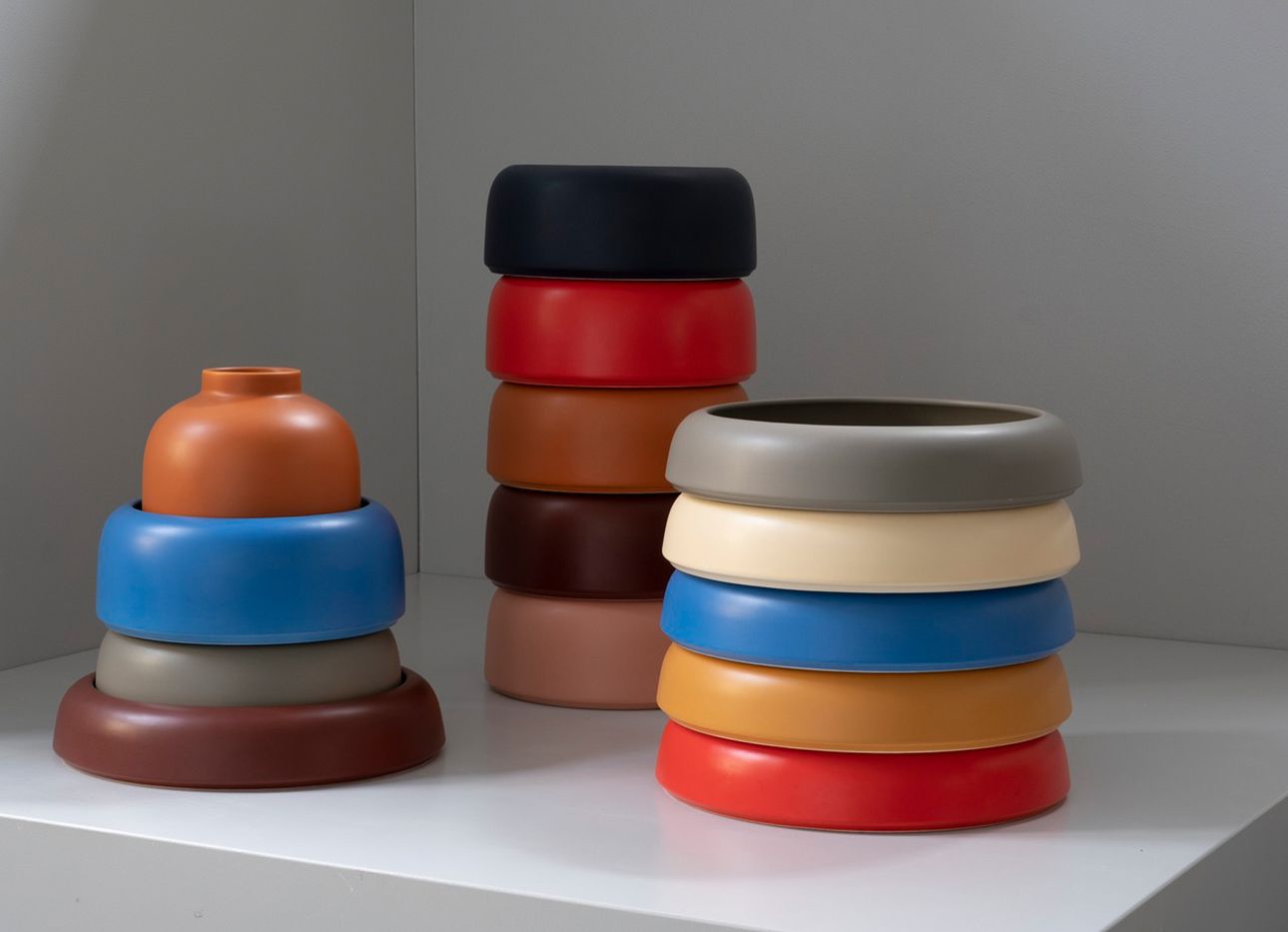
These Earthenware Vessels by Omar Sosa Invite Improvisation and Play
Tactility has been central to Omar Sosa’s creative practice for years. He developed a fondness for making books while working as a graphic designer and art director in his native Barcelona. In 2008, while in his mid-20s, Sosa co-founded the award-winning interiors magazine Apartamento, which has developed a cult following for its content—candid conversations with creative people from a variety of fields paired with refreshingly informal photographs of their homes—as well as its design, which he says has always been rooted in a consideration for the weight, texture, and volume of the final physical product.
So when Sosa, who currently serves as Apartamento’s creative director, was approached by his friend Nicholai Wiig-Hansen, co-founder of the Danish home accessories company Raawii, to create a line of ceramic vessels for the brand, Sosa began by visiting a ceramics workshop that Raawii partners with in Portugal to gain a better understanding of the material and how artisans shape it with their hands. When developing the collection, his first foray into industrial design, Sosa was considerate of his role as a newcomer. “Stepping into a field where it’s not something I know, and where there are designers who have been doing it for a really long time, I wanted to approach the discipline with respect,” Sosa says. He spent his first few visits at the workshop learning about the prototyping process, in which a craftsperson carves into a block of plaster as it rotates on a potter’s wheel, and removes material until it achieves a desired form that’s then used to make a mold for slip-casting additional pieces.
Sosa used the technique to produce a line of glazed earthenware vases, carafes, and bowls—which debuted during last year’s Salone del Mobile furniture and design fair in Milan and are now available at the MoMA Design Store, Net-A-Porter, and on Raawii’s website—that strike a visual balance that’s both expressive and refined. Each handmade piece comes in one of nine colors, which range from a subdued gray-green to vibrant burnt orange and vermillion, created by Sosa to stand on its own or to harmonize in a number of combinations. While the forms’ rounded silhouettes feel vaguely reminiscent of everyday household items, they also possess an inherent ambiguity; how to use them isn’t exactly clear. Function comes into focus as one begins to handle the pieces, which stack or nest within each other and lend themselves to a variety of uses.
This dialogue between the designer and the user is intentional. “It’s very interesting to see people using your designs in their own ways,” Sosa says. Likening the act to his own experience as a novice experimenting in a new field, he continues, “The eye of the beginner is unique, and you’re a beginner only once. It’s very difficult to unlearn. You don’t know what’s right or wrong, so you’re just trying things out.”